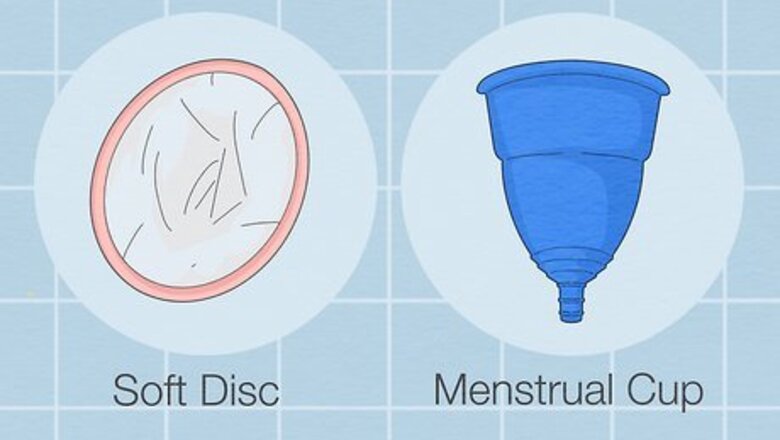
views
- Wash your hands and the menstrual cup itself with mild soap.
- Squat or lift 1 leg up onto the toilet, then fold the cup in half.
- Gently insert the cup into your vagina, angling it back toward your tailbone.
- Turn the menstrual cup 1 full rotation to make sure the seal is tight.
Inserting a Menstrual Cup
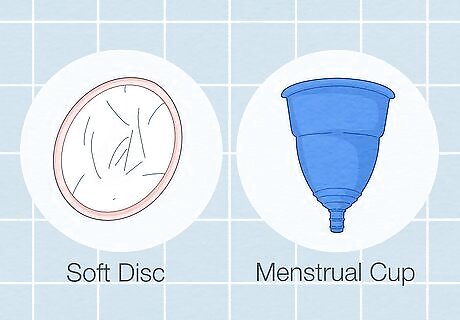
Pick the right menstrual cup for your body. Menstrual cups are becoming more popular, so you can find them in most drug stores and big box stores. Some are a bit smaller or larger, so it's always good to read reviews before deciding on one. In general, you can choose the correct size by using a small menstrual cup if you’ve never given birth before and a large menstrual cup if you have given birth before. Popular menstrual cup brands include the Diva Cup, Soft Disc, and Lunette. Menstrual cups run $30-$40 USD, but keep in mind that you can use them over and over, so they eventually pay for themselves. However, you can get them cheaper, usually in the $7-$10 USD range on the low end, so look around if you just want to try one out. Menstrual cups are typically made of silicone or rubber. If you have latex allergies, make sure the cup you choose is made completely with silicone.
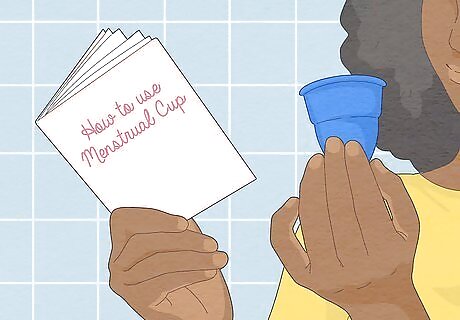
Read the instructions that come with your menstrual cup. Instructions can differ from cup to cup, so it's always a good idea to read what comes with your cup! That way, you know just what you should do with yours. If you have an intrauterine device to prevent pregnancy, don’t worry—you can still use a menstrual cup with an IUD.
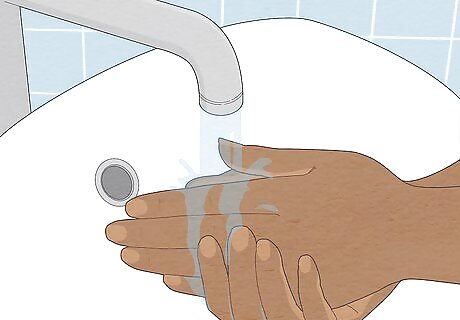
Wash your hands thoroughly before touching the cup. Wash your hands any time you're using products around your vaginal area to avoid introducing bacteria. Use warm water and soap, making sure you scrub for at least 20 seconds before rinsing. You can sing the "Happy Birthday" song slowly to yourself to estimate 20 seconds.
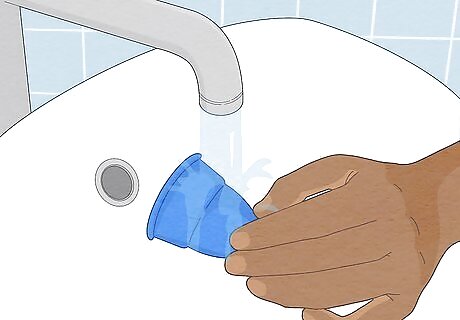
Wash your cup with a mild soap before using it the first time. Most companies will ask you to wash it before you put it in. Pick a fragrance-free soap labeled for sensitive skin. Thoroughly rub the cup inside and out with the soap and warm water, and then rinse the soap off completely. If you’re worried about insertion, apply a little bit of water-based lube (or even just water) to the rim of the cup. This will help it slide inside easier.
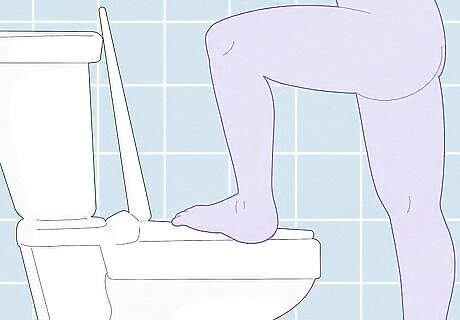
Squat or raise 1 leg up on the toilet. Some people prefer to squat, while others find balancing 1 leg up higher works well. You can even just sit on the toilet, spreading your legs apart. Set aside a little time to insert your cup the first time you do it. It may take some trial and error. You can even do it in a warm shower to help relax you.
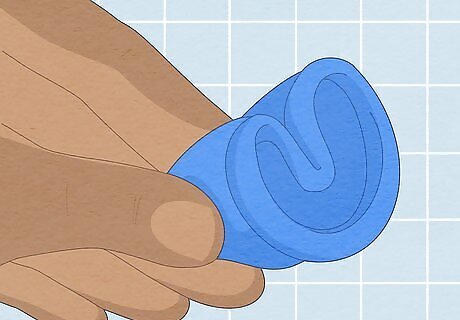
Fold the cup to make it easier to insert. Hold the cup in 1 hand with the stem facing down and the bowl facing upwards. There are several different folds to choose from, and you can try them all out to see what you prefer. Folds include: The c-fold: Squeeze the opening of the cup together, then fold the opening in half. The 7-fold: Fold the cup in half, then pull down the right side to make a “7” shape. Punch-down fold: Hold the cup between your thumb and middle finger, then press one edge down with your index finger, pushing it in toward the center of the cup.

Relax your muscles as much as you can. Take a few deep breaths. If you're nervous, you'll tense up, and that will make it harder to insert. Try tensing your vaginal muscles for a moment and then releasing them.
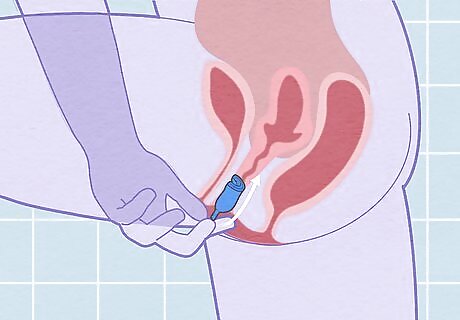
Insert the cup into your vagina, angling it toward your tailbone. With your other hand, spread your labia (lips) apart. Gently press the folded cup into your vaginal opening, angling the cup toward your tailbone. Release the fold and let the cup move into place. Typically, the cup won't go as high as a tampon, though you can push it higher if you'd like. Some cups are made to go higher, so always read the directions for yours. If it doesn't feel right, try inserting it again to see if it feels more comfortable.
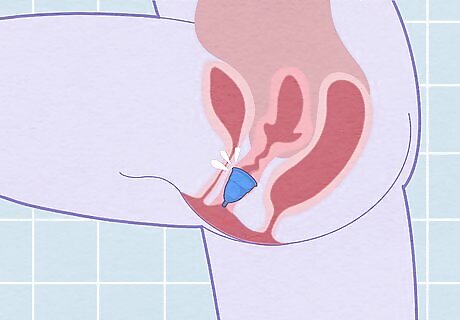
Twist the cup to make sure it seals. Grab the base of the cup by the sides (not the stem) and turn it at least 1 full rotation. This will help ensure that the sides pop out completely to create the seal. You may hear or feel a "pop," which is a sign that the cup has opened. If you're not sure, reach up and feel around the base of the cup. It will be round or oval, depending on your body shape. If it hasn't opened, pull lightly down on the stem without actually pulling the cup out.
Removing the Cup
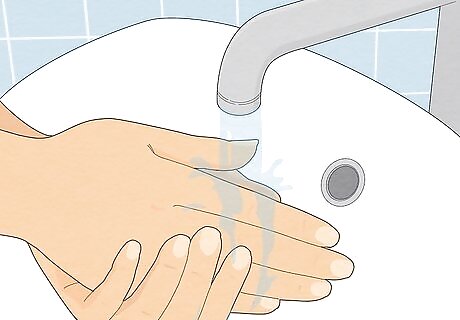
Wash your hands. Just like when you insert the cup, you need to wash your hands thoroughly before removal, too. Take 20 seconds to wash your hands with soap and warm water to avoid introducing any bacteria into your vaginal area.
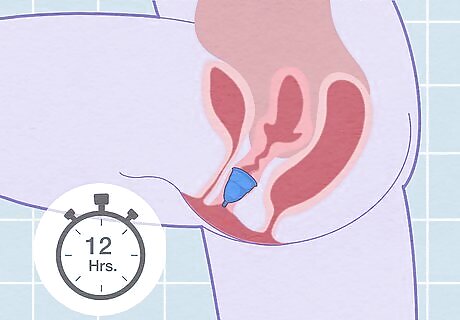
Check the cup to see if it’s full every 8 to 12 hours. Most of the time, you can get away with leaving the cup in for 8 to 12 hours. That means you only have to empty it in the morning and at night, which you can do in the comfort of your home. If you have a particularly heavy period, you may need to empty it more often.
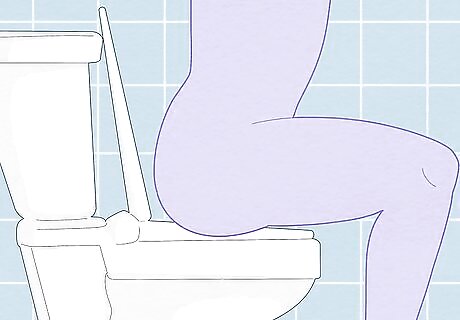
Sit over a toilet to take the cup out. While some people need to take it out standing up, try it over a toilet. It can be messy if you don't have the technique down yet. Don't worry, though. Once you figure out the best way for you to remove the cup, it tends to make very little mess at all!
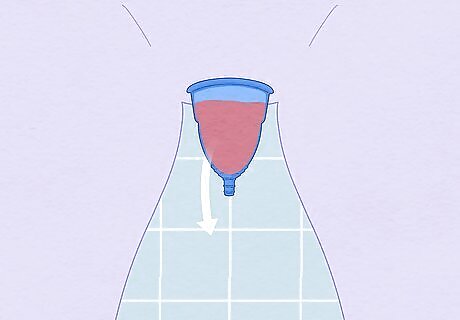
Pinch the sides of the cup to break the seal. You can't just yank the cup out, as suction will be working against you! Instead, grab the base of the cup just above the stem and pinch the sides together. That will break the seal enough for you to pull it out. Make sure to keep it upright as you pull it out. If that doesn't break the seal, try moving one finger over the rim of the cup. Don't worry if you can't get it out on your first try! It can't get "lost" in your vagina; your vagina doesn't work that way. Take a moment, relax, and then try again.

Empty the cup into the toilet. Continue to keep it upright as you move it toward the toilet, and then turn it over to dump out the contents. If you can't wash it out right then, you can simply wipe it off with toilet paper and re-insert it. Be careful not to drop it in the toilet! If you do, make sure to wash it thoroughly before putting it back in.
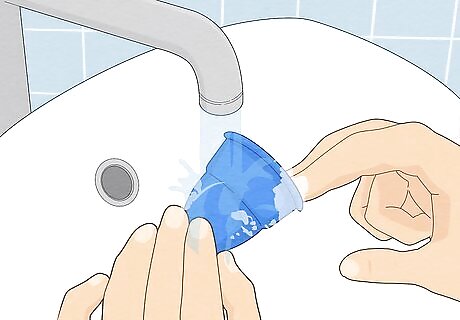
Wash your cup with soap and water. If possible, rinse the cup out in the sink. Then, rub it down with soap and warm water, making sure to use running water to get all the soap off. Then, you can put the cup back in. It's best to use a mild, unscented soap. If you have a disposable cup, toss it out and put in a new one.
Cleaning Your Cup and Troubleshooting
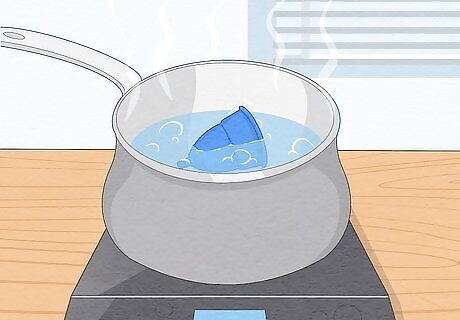
Sterilize silicone or rubber reusable cups between periods by boiling them. Wash the cup out with soap and water. Then, bring water to a boil in a small pan. Place it in the pan, and boil it for 2 to 3 minutes to sanitize it. Keep a separate pan just for this purpose. You can also clean a menstrual cup with a sterilizing solution, like what you would use for baby bottles. You can find these solutions with the baby bottle supplies in big box stores. Always read the directions for your cup about sterilization, as the process can differ from cup to cup.
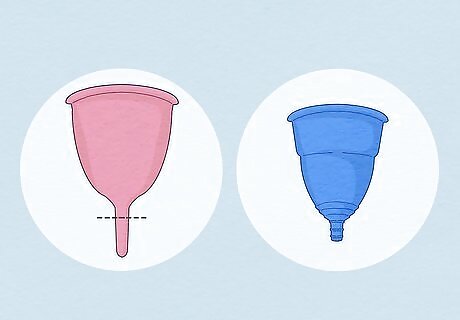
Cut part of the stem off if it bothers you. For some people, the stem on the cup is too long and causes irritation. If that's true for you, use scissors to snip the bottom half or so of the stem. The stem is useful for removing the cup, so don’t cut it all the way to the base of the cup. You can also just purchase one with a shorter stem.
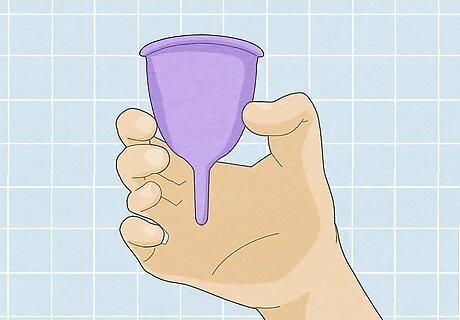
Try out different cups if your first one doesn't feel right. Not every cup is going to fit every person! That's why there are different ones out there. If you find yours to be uncomfortable, consider trying another one to see if that's a better fit. For instance, you can get a smaller cup, one with a shorter stem, or one made for people who are more sensitive. Some even come in different shapes! For instance, some cups are more angled than others.
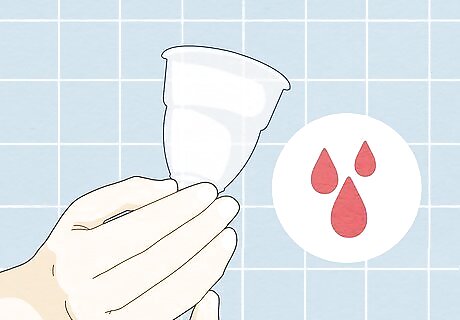
Get a cup designed for a heavy flow to prevent leaking. While accidents do happen, you won’t leak in a cup most of the time, as long as you make sure to get the seal right. However, if you're consistently overflowing your cup and you can't or don't want to check it more often, try out one made for a heavier flow. It will hold more liquid, making it less likely to overflow.



















Comments
0 comment